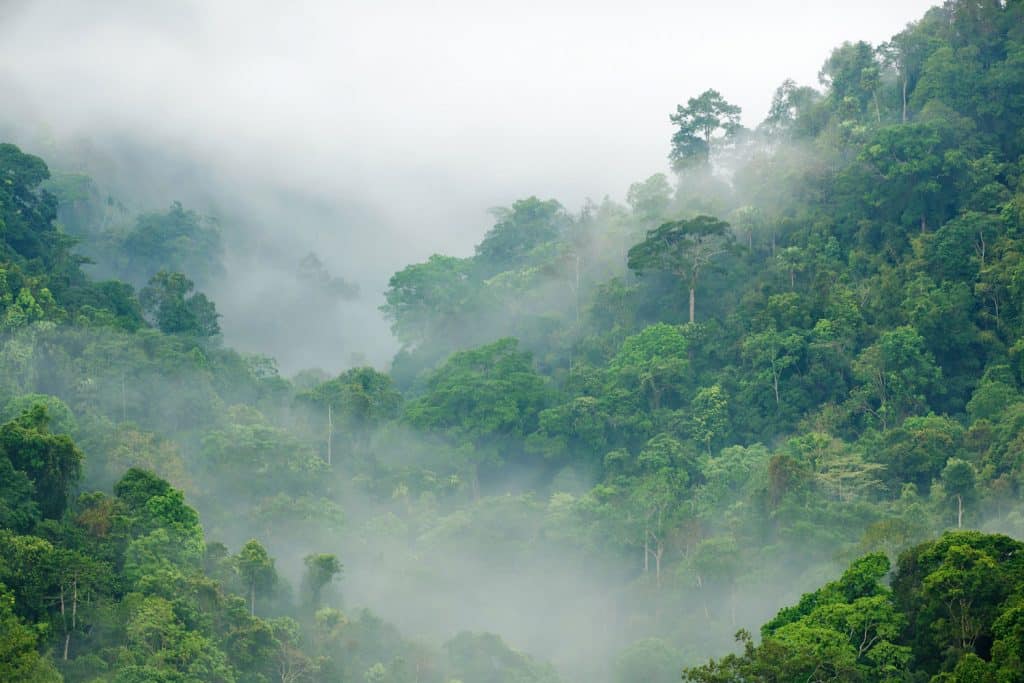Over the course of the late 20th and early 21st centuries, population growth and development have degraded about 75% of the world’s tropical rainforests, threatening many of the 16,396 species of vertebrates that call those forests home.
That’s according to a study led by Rajeev Pillay of the University of Northern British Columbia (UNBC) and co-authored by researchers at Northern Arizona University, published recently in the Proceedings of the National Academy of Sciences.
Using maps generated from a combination of airborne laser profiling and satellite imagery across the Amazon, the Congo Basin and other large tropical rainforests throughout the world, they discovered that today, only 25% of tropical rainforest can be considered “high integrity”—voluminous, structurally diverse and relatively free from human intervention.

“With increasing human populations and with increasing access to natural areas, the pressures on tropical forests have mounted rapidly over the last few decades,” said Scott Goetz, a co-author and Regents’ professor in NAU’s School of Informatics, Computing, and Cyber Systems (SICCS). “With this research, we have found that, despite preservation and conservation efforts, tropical forests and the animals that live inside them are in even more trouble than we realized. To preserve biodiversity, which is very important for how the Earth’s ecosystems function, it’s crucial that we not only prioritize conservation but also mitigate some of the human pressures we’ve placed on these forests.”
Goetz said this is the first time scientists have made an accurate, big-picture assessment of the integrity of tropical rainforests worldwide. Until now, researchers have had to rely on satellite images of forest cover. But cover, Goetz said, only tells part of the story: Some forests appear lush and thriving from above, even as they stagger under the heavy weight of human intervention on the ground.
For example, the researchers’ analysis found that while many forested areas across the tropics appeared to be in good structural condition, a closer look showed they were in fact “low-integrity” forests crisscrossed with roads and infrastructure that have limited animals’ ability to forage and thrive. The world’s highest-integrity rainforest was the Amazon, which until recently has remained relatively intact and remote, with few roads crossing through it.
“The Amazon is the largest forest basin in the world, and a lot of it is inaccessible to non-Indigenous people,” said Patrick Jantz, another co-author and an assistant research professor in SICCS. “For the most part, there are no major roads cutting through the interior of the forest, and people can only get so far into a tropical rainforest without roads. That means the species that live there are protected from unsustainable hunting and all the other damage humans can do.”

In areas like the Amazon that are free from human disturbance, species of mammals, reptiles, birds and amphibians can thrive: diversity and population levels there are holding steady. By contrast, Jantz said, species populations and diversity are suffering in many other regions, such as Borneo, Sumatra and countries in Latin America and West Africa.
What surprised researchers the most, Goetz said, was their finding that human intervention was nearly equally impacting every category of animal that lives in tropical rainforests.
“We’ve known for a while that amphibians and smaller reptiles seem to be disproportionately affected by deforestation,” Goetz said. “We would have expected birds to be less impacted because, theoretically, they can fly away from disturbances. But our study found that they’re impacted just as much as the other categories of animals. Overall, threatened and endangered species were consistently and significantly less prevalent, and had declining population trends, in areas with lower forest integrity.”
For Jantz, that finding drives home the close connections between forest integrity and animal diversity—and the urgent need to protect both tropical animals and their habitats.
“We can’t always go backward; we can’t un-build roads or un-log forests,” Jantz said. “But if there’s one lesson to take away from this research, it’s that if we want to reintroduce tropical species or remove them from the threatened and endangered species lists, then we have to reduce the amount of human pressure that caused them to become endangered or exterminated in the first place. You can plant all the trees you want, but if you don’t also remove human pressure from these forests, you won’t be able to restore the biodiversity that keeps them thriving.”
Other authors of the paper are Patrick Burns, a senior research scientist in SICCS; José Aragón-Osejo and Oscar Venter of UNBC; James E.M. Watson of the University of Queensland in Australia; Andrew J. Hansen of Montana State University; Anne Virnig, Christina Supples and Jamison Ervin of the United Nations Development Program; Dolors Armenteras of the Universidad Nacional de Colombia; and Pamela González del Pliego of the Universidade de Évora in Portugal.
The research was funded by grants from the NASA Biodiversity and Ecological Forecasting Program (NNX17AG51G), the NASA Global Ecosystem Dynamics Investigation (NNL15AA03) and the NASA Group on Earth Observations solicitation (80NSSC18K0338).
Jill Kimball | NAU Communications
(928) 523-2282 | jill.kimball@nau.edu




